Theoretical Physicist Brian Greene Explains Time in 5 Levels of Difficulty | WIRED
Last updated: May 6, 2023
Brian Greene talks about the relationship between motion and time to a nine-year-old girl, Kayla.
Motion through space and the passage of time are connected, and it is impossible to hold still in time without experiencing the next second. According to Albert Einstein's theory of time travel to the future, if a spaceship travels quickly and comes back to Earth, time on the spaceship will tick off more slowly.
It is not yet known if traveling back in time is possible, and the speed of light is the limit to how fast things can go.
Brian explains Einstein's theory of time in detail using a light clock to show how the path during motion is much longer, causing it to tick off time more slowly.
The ratio of time on a stationary clock to time on a moving clock is determined by the speed of light and the speed of the moving clock.
The ratio of time on a stationary clock to a moving one is given by the square root of 1 minus V over C squared, where V is the velocity of the moving clock and C is the speed of light.
The laws of physics have no mathematical difference in time forward or backward, but macroscopic experience does draw a distinction between the past and the future. The ultimate source of order is believed to be the Big Bang itself.
Einstein's theory of relativity shows that time changes with speed and gravity. Clocks in stronger gravitational fields tick slower. Wormholes could potentially allow time travel, but it raises philosophical paradoxes such as changing the past. The shape of the universe also affects time.
Scientists study other galaxies to know what happened in the past and predict the future, but predicting the future is difficult. Our brief existence is a moment in the universe's history, and space is where events occur, while time tells us when they occur.
- Motion through space and time are connected.
- Speed of light is the limit to how fast things can go.
- Albert Einstein's theory of time travel to the future suggests time on a spaceship will tick off more slowly than on Earth.
- The ratio of time on a stationary clock to a moving clock is determined by the speed of light and the speed of the moving clock.
- Macroscopic experience distinguishes between the past and future, but the fundamental laws do not.
- The Big Bang was highly ordered, and we have been living through the degradation of that order.
- Einstein's theory of relativity shows time changes with speed and gravity
- Wormholes could potentially allow time travel but raises philosophical paradoxes
- The shape of the universe affects time
- Scientists study other galaxies to know what happened in the past and predict the future
- Newton is credited for understanding how to measure nature
- Every moment is eternal, and every point in space is permanent
Relationship between motion through space and time 00:30
- Brian Greene talks to Kayla, a 9 year old girl, about the relationship between motion through space and time.
- Kayla has gone around the sun 9 times because she is 9 years old.
- Motion through space and the passage of time are connected in some way.
- Moving through space is easy, but holding still in space is difficult.
- It is impossible to hold still in time and not experience the next second.
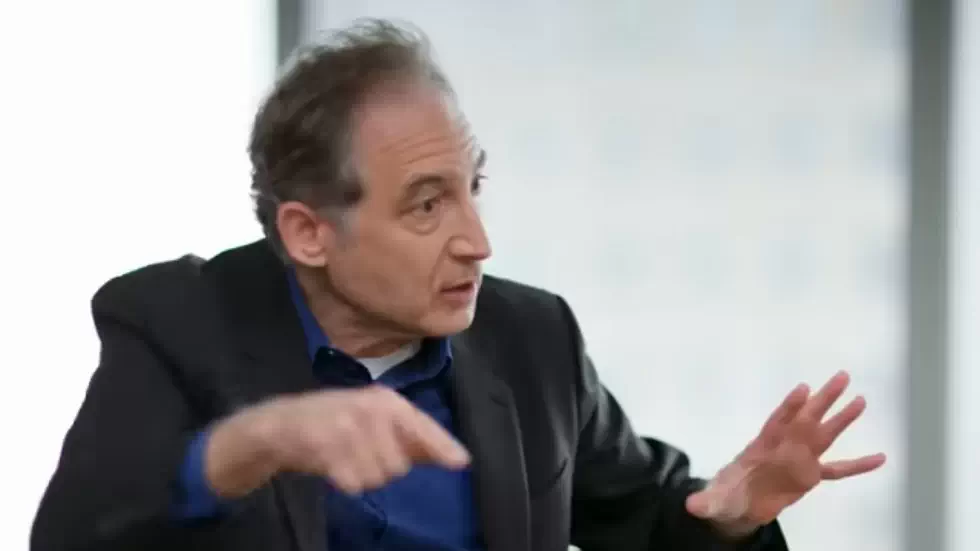
Traveling to the future 01:42
- Brian explains Albert Einstein's theory of time travel to the future.
- If a spaceship travels really quickly and comes back to Earth, time on the spaceship will tick off more slowly.
- The journey may only take a year or six months out and six back, but when the spaceship returns to Earth, it will be a hundred or a thousand years into the future.
- It is not known if it is possible to travel back in time.
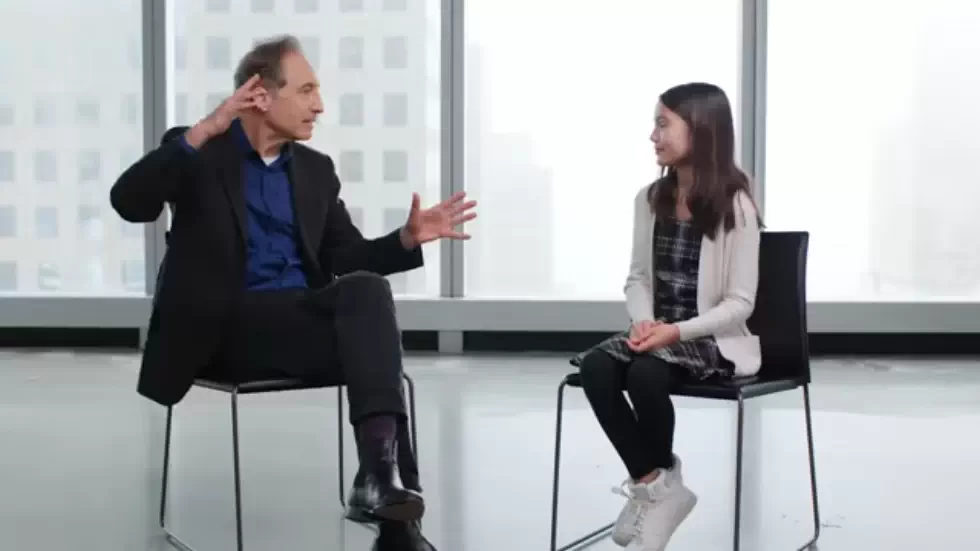
Limitations of speed and the arrow of time 02:53
- Albert Einstein showed that the speed of light is the limit to how fast things can go.
- The arrow of time points from the past into the future.
- It is not known why there is an arrow of time.
- Brian asks Kayla what she has learned about time and she responds that you can't travel back through time, but you can travel to the future.

Einstein's theory of time 05:15
- Brian explains how Albert Einstein found that identical wristwatches will tick off time at different rates.
- Brian demonstrates this concept using a light clock, which has two mirrors facing each other and a photon that goes up, hits the top mirror, comes back down, and hits the bottom mirror.
- When the light clock is in motion, the path is much longer, causing it to tick off time more slowly.
- The ratio of time on the stationary clock compared to time on the moving clock is the ratio of lengths, which is given by D over L.
- This length over here is the same as L over here.
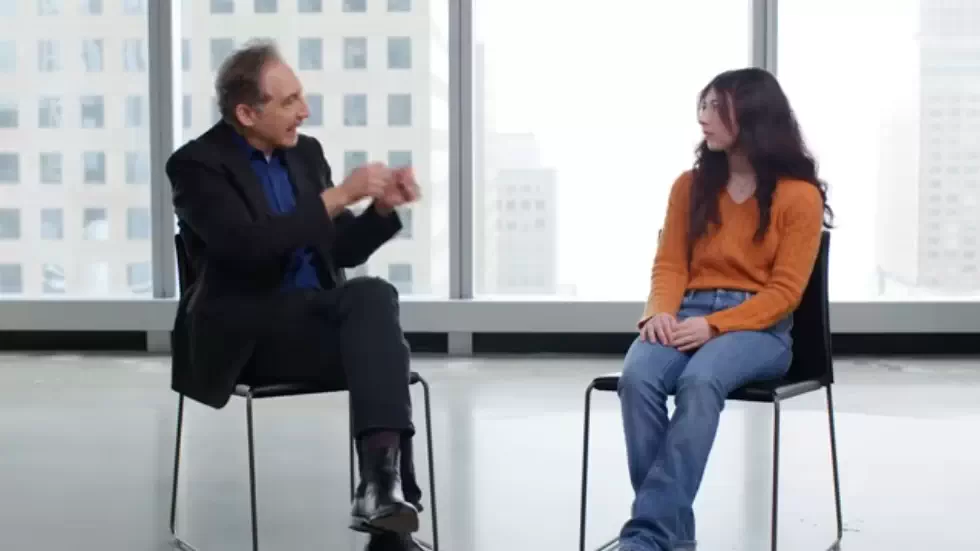
The Ratio of Time on Stationary Clock to Time on Moving Clock 07:17
- The ratio of time on a stationary clock to time on a moving clock is determined by the speed of light and the speed of the moving clock.
- The speed of light along the diagonal is equal to the speed of light.
- The speed of the moving clock in the horizontal direction should be at a perfect pace with the speed of the clock itself.
Deriving the Formula for the Ratio of Time on Stationary Clock to Time on Moving Clock 07:25
- If we can figure out 1 over sine Theta, we will have a formula for the ratio of time on a stationary clock to time on a moving clock.
- Cosine Theta is equal to V over C.
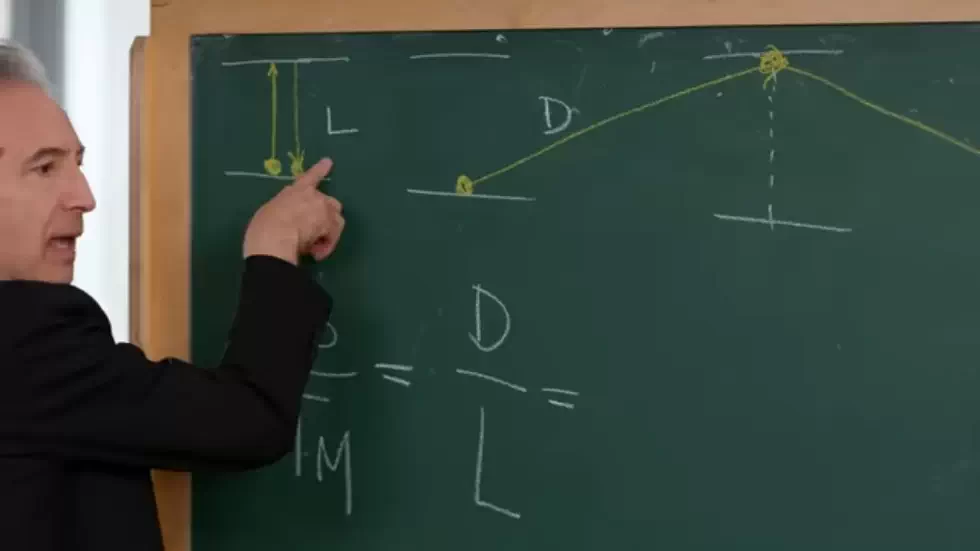
The Identity of Sine Squared Theta Plus Cosine Squared Theta Equals One 08:25
- Sine squared Theta plus cosine squared Theta equals one is a beautiful identity from trigonometry.
- From this, we can solve for sine squared Theta, which is equal to 1 minus V over C squared.
Conclusion of the Formula for the Ratio of Time on Stationary Clock to Time on Moving Clock 08:48
- The ratio of time on a stationary clock to time on a moving clock is equal to the square root of 1 minus V over C squared.
- As V gets very close to C, the ratio gets very close to one.
- One minus something very close to one is very close to zero.
- One over something close to zero is huge, meaning that the ratio of time on a stationary clock to time on a moving clock can be a huge number.
- This is true for any clock and is what Einstein discovered in 1905 with his special theory of relativity.
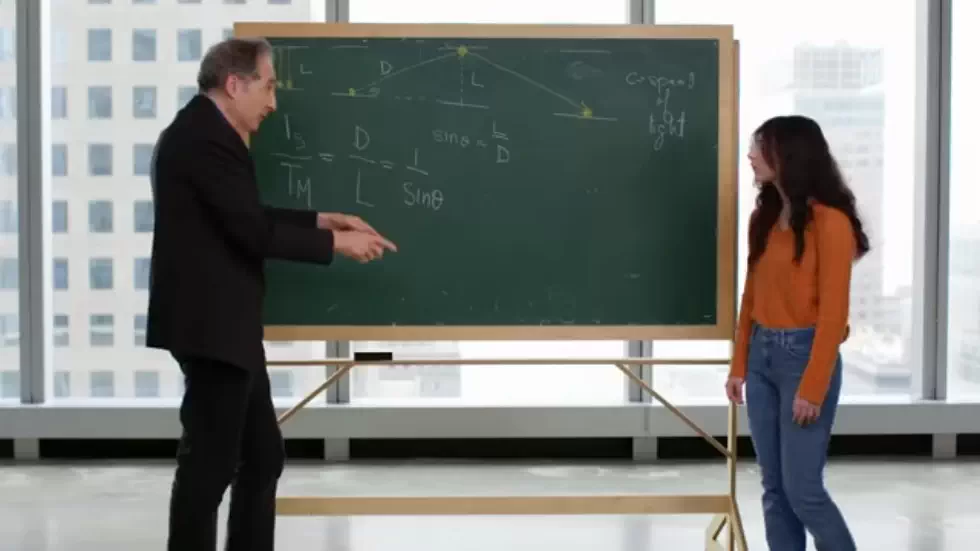
The Possibility of Using These Formulas and Concepts in Daily Lives 09:33
- It is possible that as technology progresses, the barrier between the limitations of experience and the truth of how the world behaves in extreme environments will be moved.
- It is possible to have the kind of intuition about these ideas, just like how we can toss a pack of gum and know where to put our other hand to catch it.
- The person being interviewed is studying physics and computer science.
The Laws of Physics Have No Mathematical Distinction Between Forward and Time Backward 10:23
- There is no mathematical distinction in the laws of physics between forward and time backward.
- There is a curious foundation to the arrow of time going from the past to the future, which is a statistical tendency towards entropy increase.
- Entropy equals Boltzmann constant times log of a particular quantity, which is ultimately counting the number of distinct configurations that a system can be in.
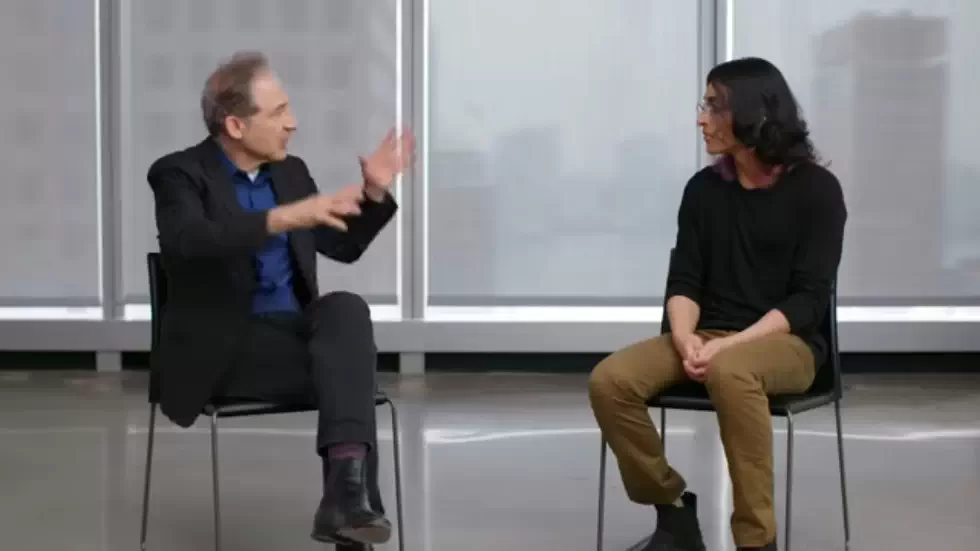
The Fundamental Equations Treat Past and Future on Equal Footing 11:24
- In any of the formulations of the fundamental equations, if we replace T by minus T and do it properly in the equations, they still work.
- The macroscopic experience does draw a distinction between past and future, but the fundamental laws do not.
- The ultimate source of order is believed to be the Big Bang itself.
Highly Ordered Beginning Called the Bank 14:28
- The beginning of the universe is referred to as the bank, and it was highly ordered.
- Since then, we have been living through the degradation of that order.
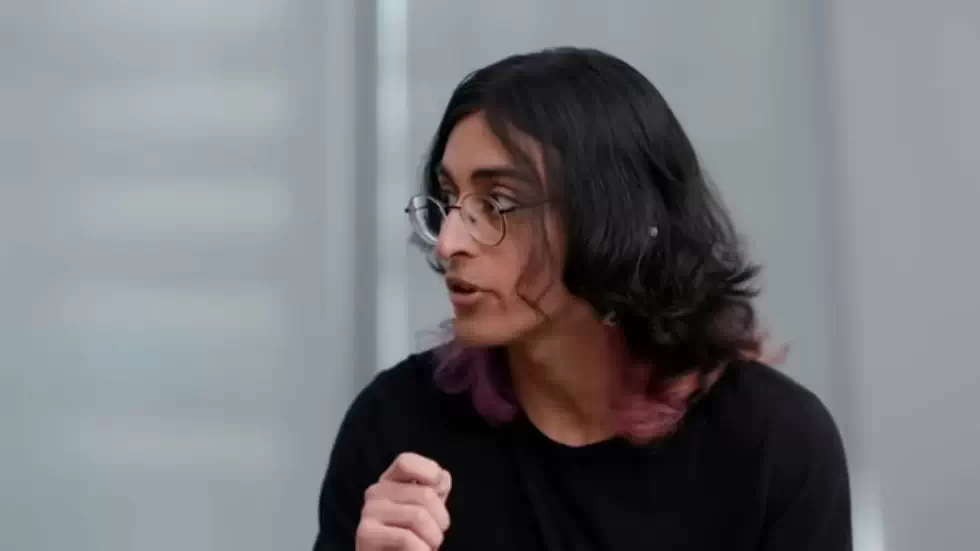
The Big Bang 14:38
- We still don't fully understand why the Big Bang had to be highly ordered at the moment of its occurrence.
Time Changes with Speed and Gravity 14:46
- Einstein's theory of special relativity proposes that time changes with speed.
- Time also changes with gravity as shown by Einstein's theory of general relativity.
- Clocks ticking in a stronger gravitational field or gravitational potential experience slower time.
- There was a scene in the film, Interstellar, where time elapsed differently for the characters on a planet near a black hole than for those on a spaceship.
- GPS satellites need to take into account the fact that time elapses differently for clocks on the satellite compared to those on Earth.
Researching the Past and Future 16:34
- Scientists want to know what happened in the past and what will happen in the future.
- They can only observe a single snapshot of the night sky at a time.
- Scientists can learn more about what happened in the past by studying other galaxies.
- Predicting the future is difficult.
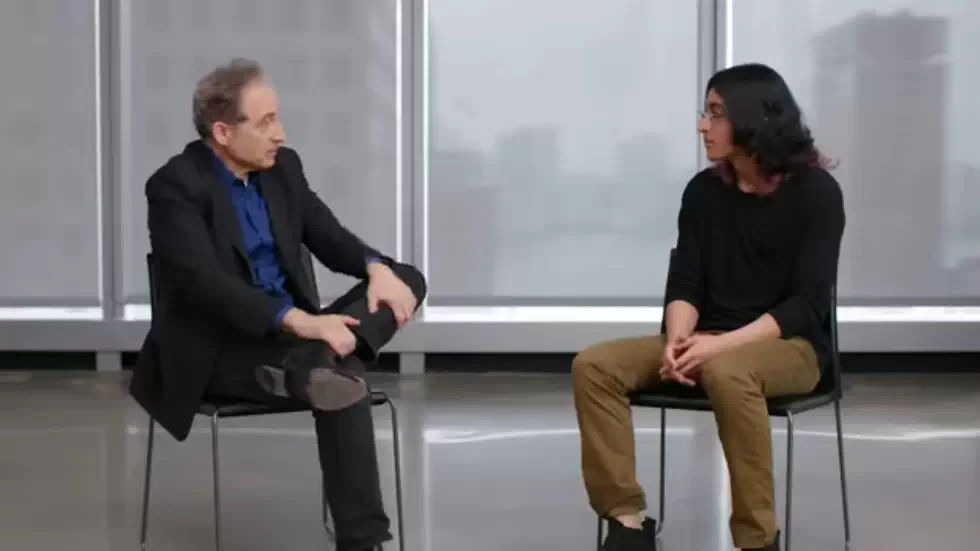
Wormholes and Time Travel 17:14
- Wormholes are tunnels, or shortcuts, from one point in space to another.
- Moving the openings of a wormhole can cause time to elapse differently at different openings.
- There is a possibility of wormholes as time machines.
- Going in one direction through a wormhole could take you into the future, while going in the other direction could take you into the past.
- The idea of time travel raises philosophical and logical paradoxes.
- Some theories say that changing the past is impossible, while others propose parallel universes.
The Possibility of Free Travel to the Past 19:59
- It is suspected that if we fully understand the final physical laws, something will prevent free travel to the past.
- Some theories suggest that traveling to a moment in the past before the first time travel machine is built is impossible.
- The twin paradox is a scenario where one person ages less than the other due to their relative motion.
- There is no clear resolution to the twin paradox.
- Some theories propose that you can only travel to a moment in the past after the first time travel machine is built.
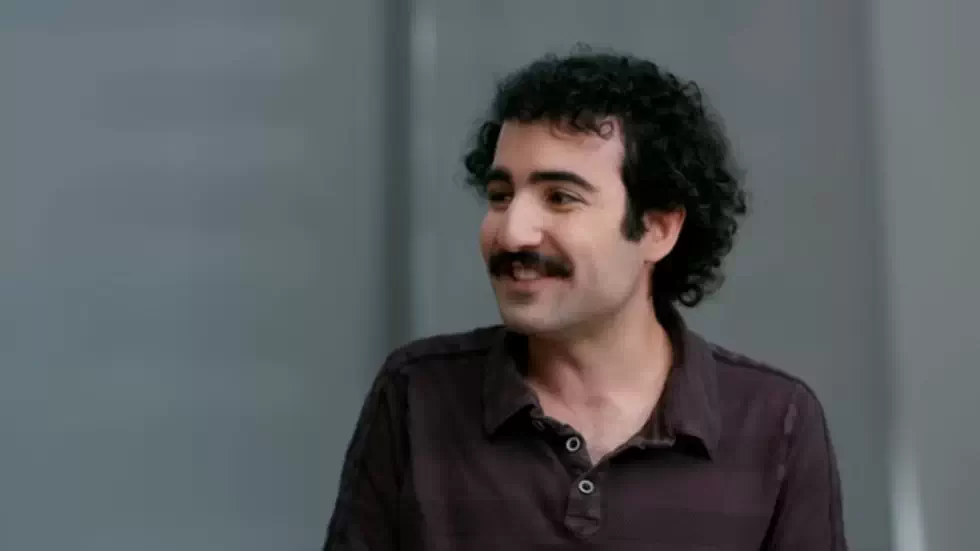
The Universe's Shape and Time 21:06
- The universe's shape can affect time
- A donut-shaped universe was used as an example
- Imagine two laser beams traveling around the universe's circular part
- The beams return to the starting point at different times depending on the observer's movement
- This means that there's a preferred frame of reference in the universe
Time and Our Brief Flicker 23:11
- Our existence is a brief moment in the universe's history
- There were long periods without human beings
- Our presence is like a flicker between two long stretches
- It can be debilitating to think about the eternal future of nothingness
- However, it's remarkable that we have this brief moment to think, feel, love, explore, and illuminate

Space and Time 24:00
- Space is the language that tells us where events occur
- Time is the language that tells us when they occur
- Time is irreversible and allows us to talk about change
- Time is measured by clocks
- Time and space can be described in equations that specify causality
Special Relativity and Time 24:41
- Special relativity works in the setting of a flat space-time
- Einstein's ideas can be combined with modifications of flat space-time
- Global shape and topology of space-time can affect the propagation of signals through time
- A fast-moving observer can send signals that are received in a very small amount of time
- This allows for real-time conversation over arbitrary distances
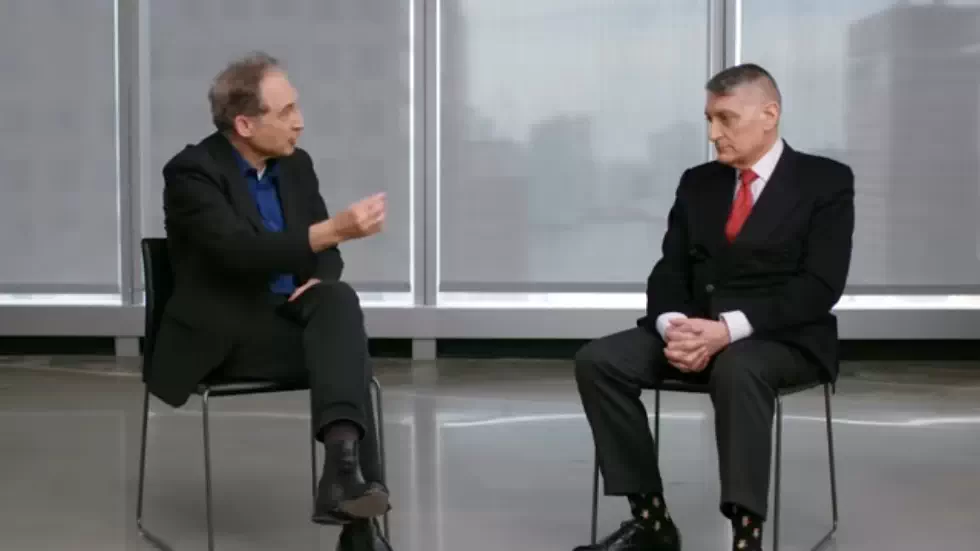
Emergent Quantities 27:11
- Space and time may not be fundamental but rather emergent quantities
- Emergent quantities require a concrete model to make sense
- The idea of space and time as emergent quantities is not unthinkable
The Greatest Scientific Revolution 27:59
- The greatest scientific revolution was not in the 20th century, nor was it quantum mechanics, general relativity, or special relativity.
- The passage from the qualitative description of nature to a quantitative one has been the greatest scientific revolution.
Newton 28:18
- When you pass from asking how to how much, you understand something.
- Who do you credit that understanding to? For this, Newton is credited.
Time in Space 28:32
- One of the things that relativity sheds light on is what exists.
- If someone is moving relative to me, what they consider now might be in my past, and what they consider now might be in my future.
- This suggests that all of time exists in the same way that all of space exists.
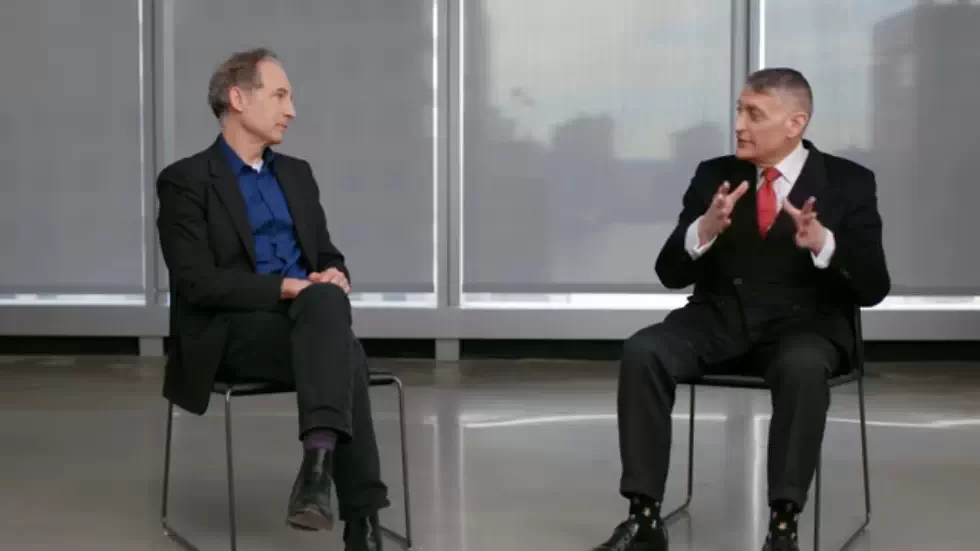
Space-Time Diagrams 28:56
- Space-time diagrams are used professionally to describe particles.
- These diagrams have two axes, space, and time.
- The line that goes up in time describes a particle.
Histories in Quantum Mechanics 29:41
- The approach to histories in quantum mechanics treats space and time on a more equal basis.
- This is the idea that what is described is a history, an evolution, not a particular moment in time.
The Eternal Now 30:16
- Every instant is eternal, just as each point in space is not something that disappears but will always be there.
- The idea that something is irretrievable is foreign.
- Every moment is eternal in the same way that each point in space is permanent.
Conclusion 31:13
- The subtlety and richness of the world we experience all the time is something to be appreciated.
